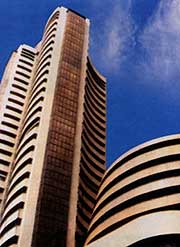 Everyone nowadays seems obsessed about the question as to whether or not Islam can be reconciled with modernization. In discussing this issue, what constitutes modernisation is often confused with westernisation. Understanding the difference is vital.
Everyone nowadays seems obsessed about the question as to whether or not Islam can be reconciled with modernization. In discussing this issue, what constitutes modernisation is often confused with westernisation. Understanding the difference is vital. India's encounter with the West over the past three centuries underscores the distinction between the two processes - modernisation and Westernisation - that are often assumed to be synonymous. In fact, modernisation does not entail Westernisation, as the example of contemporary Japan demonstrates. Whereas modernisation entails a change in belief about the way the material world operates, Westernisation entails a change in cosmological beliefs about the way that one should live.
Like China and unlike Japan, India resisted changes in its ancient beliefs about the way the world works (and should work) which modernisation entails. Instead, like many Islamic countries today, India wrongly believed Gandhi's doctrine that modernisation necessarily means Westernisation. Fitfully, and under the influence of the British Raj, parts of the economy and society were modernised during the second half of the 19th century of laissez-faire and free trade. Some of the traditional literary castes also embraced Westernisation.
British policy turned India into a pioneer of Third World industrialisation, with an economy increasingly based on domestic capital and entrepreneurship combined with imported technology. But modernisation stalled when protectionist pressures from Lancashire and the exigencies of Imperial finance led the British to abandon free trade and laissez-faire. At the same time, Westernisation fueled the rise of a nationalist movement.
The introduction of income taxes and UK labour laws in the late 19th century led to nearly a century of mounting state intervention in the economy, a process that accelerated after independence. This damaged India's growth prospects and hopes of alleviating its ancient scourge of mass poverty. The breakdown of the global economy in the first half of the 20th century in the wake of the First World War further eroded India's incipient integration into the world economy during the British Raj. Finally, beginning with the economic reforms of 1991, India at last rejected inward-looking policies, returning to where it left off at the end of the 19th century.
We now have a fairly clear quantitative picture of the performance of the Indian economy throughout this period. During the 130 years from 1868 until 1999-2000, per capita income more than trebled, as national income increased by a factor of eight while the population grew nearly five-fold. This suggests that the age-old combination of economic stagnation and cultural stability that I call the "Hindu Equilibrium" seems finally to have been broken. But on closer inspection, it turns out that this was largely due to the economic performance of the last two decades.
The sub-period from 1868-1900 saw the beginning of industrialisation and India's partial integration into the world economy under the Raj. National income did not stagnate, as nationalist historians once maintained, but grew modestly, at an average annual rate of 1.1percent. Growth was fastest from 1870-1890, followed by large fluctuations in output. A fairly low rate of population growth ensured a modest annual rise in per capita income of about 0.7percent during this period.
The second sub-period, 1900-1945, saw the breakdown of the global economy and the start of India's population explosion. Growth of per capita income decelerated between 1902 and 1930 and declined further in the last fifteen years of British rule until 1947. After 1920, this was due entirely to the rise in population growth, to 1.22 percent per year, which outpaced fairly high output growth throughout the decade until 1930. Over this entire 45-year sub-period, output grew at just above 1percent annually-the same rate as under the Raj-but yearly population growth soared to 0.8percent, causing virtual stagnation of per capita income.
The third sub-period, 1950-1980, marked the heyday of economic planning. Infrastructure investment- which had been difficult for the embattled British Raj to finance-suddenly boomed. This, together with high agricultural growth rates, led to a dramatic rise in output, which increased at an annual average rate of 4.5percent. But the demographic explosion that began in the 1920's had by now driven the rate of population growth up to 3 percent per year, so that annual per capita income grew by only 1.5 percent.
A departure from what the late Raj Krishna dubbed the "Hindu rate of growth" came only in the fourth sub-period, from 1980-1999. Partial economic liberalisation, undertaken by the Rajiv Gandhi government in the mid-1980s, and the more substantial Narasimha Rao-Manmohan Singh economic reforms in 1991, boosted national income growth to an average annual rate of 6.8 percent. At the same time, yearly population growth slowed to an average of 2.3 percent, so that per capita income rose at an impressive annual rate of 4.5percent, making a dent in India's mass structural poverty for the first time in millennia.
If India can now complete the unfinished business of fully integrating into the global economy, there is no reason why it cannot improve upon its impressive recent growth performance. If it succeeds, Nehru's pledge, on the eve of Indian independence, "to wipe every tear from every eye," will finally be redeemed. t (? Project Syndicate)
(Deepak Lal is professor of international development at the University of California, Los Angeles, and wrote The Poverty of Development Economics, The Hindu Equilibrium, and The Political Economy of Poverty, Equity and Growth. )


